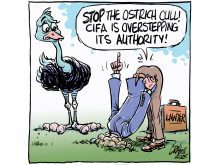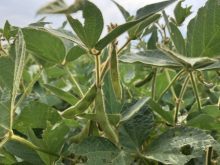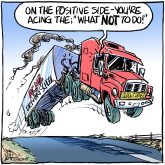WHEN IS the last time you heard someone say publicly that they are opposed to the family farm?
Family farming rates up there with positives like motherhood and apple pie. Who would dare to say outright that these things should be wiped out?
In fact, surveys continue to show that farmers are among the most respected and trusted groups in our society. Citizens support farmers, seeing them as hardworking, honest and valuable contributors.
Not only food, but all kinds of other items are advertised with positive images of farming and country living. Everything from cereals to cosmetics to trucks is sold using these images. The family farm serves as a handy shorthand for wholesome living and natural goodness.
Read Also

Rural communities can be a fishbowl for politicians, reporter
Western Producer reporter draws comparisons between urban and rural journalism and governance
A positive image and broad public support should translate into public financial support, and provincial and federal agriculture budgets are big.
But here’s the catch. Much of the so-called farm support doesn’t actually reach the family farm. It’s based on volumes of production, which means that the largest producers get a disproportionate amount of this public aid. This leaves little for small- and medium-sized farms.
Public dollars, far from aiding family farms, can help to drive them out of business. For example, large government subsidies to intensive hog operations have helped to eliminate most of the smaller hog farmers in the prairie region.
So while the public declares support for the family farm, public money can do the opposite. It’s a classic case of not putting your money where your mouth is.
In a radical challenge to this pattern of farm subsidies, U.S. president Barack Obama is moving to redirect farm subsidies to family farms. Targeting farmers, not farms, he plans to phase out direct payments to individuals who have sales revenues of more than $500,000, taking account of farming co-operatives and multiple owner/operator farms. For single owner farms, the cap on payments is $250,000.
The Obama budget plan notes that about 9.1 percent of farms collecting government payments have sales of $500,000 or more, and they get 36.6 percent of all government payments.
Capping the payments to large agri-corporations will save the public money while giving more to actual family farms.
Unfortunately, Canada’s agriculture programs have been going in the opposite direction. When the Canadian Agricultural Income Stabilization program was implemented in 2002, the cap of $975,000 was already higher than previous programs.
Calculations at that time showed that a cap of $400,000 would have given complete coverage for 95 percent of farms in Canada.
This cap was further raised to $3 million in 2004. The revised CAIS, renamed AgriStability, retains that higher cap, continuing the pattern of putting much of the aid money into the largest operations.
Government support to agriculture should be refocused. Is this money really supporting family farms? Or is it aiding corporate concentration in food production?
Is it supporting better environmental practices? Is it encouraging the production of healthier, safer food? Is it enhancing rural communities or undermining them?
Public dollars to agriculture should be used to truly reflect the public’s support for the family farm.
Nettie Wiebe is a farmer in the Delisle, Sask., region and a professor of Church and Society at St. Andrews College in Saskatoon.














